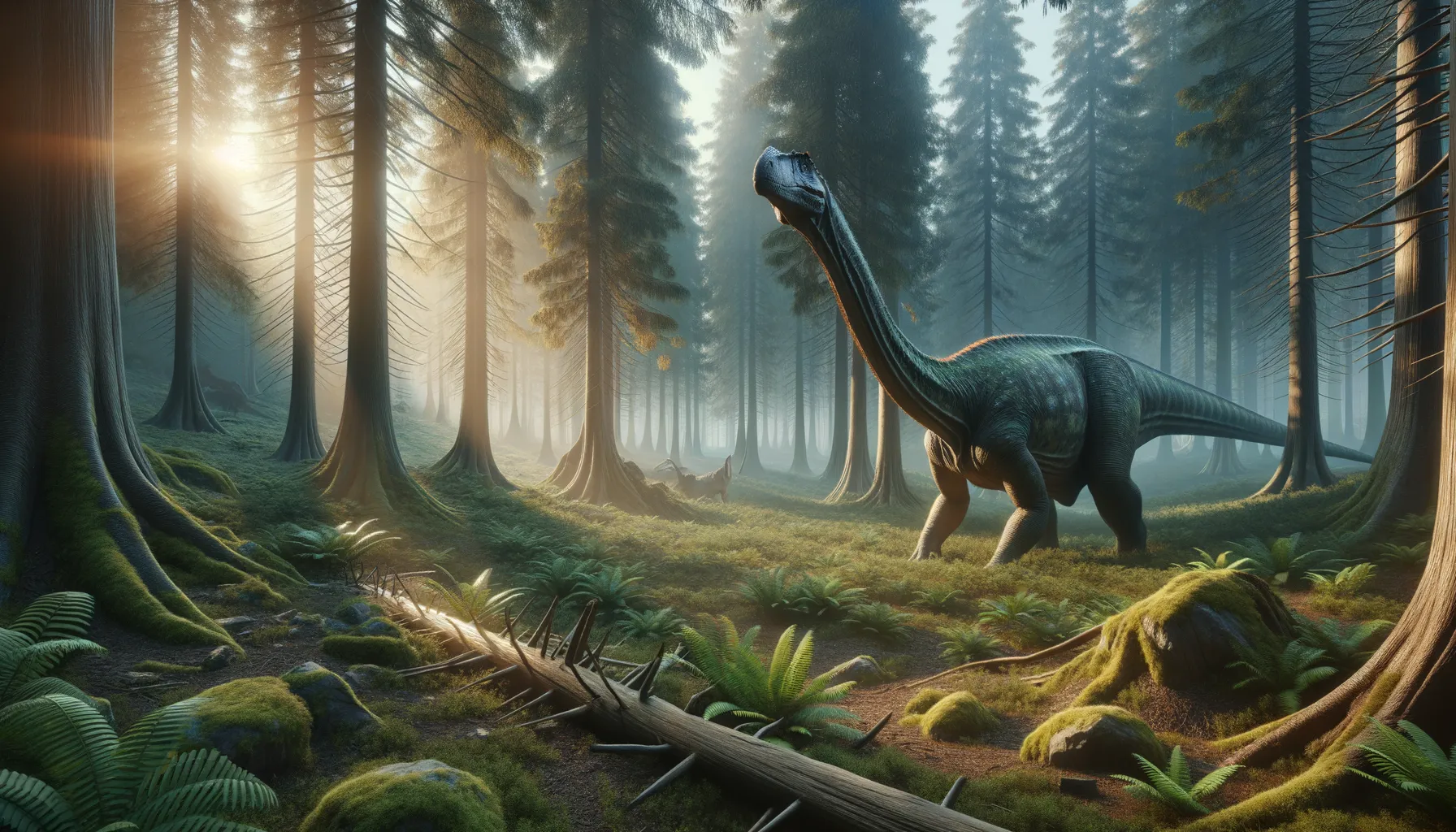
Astrophocaudia
Gentle giant of the ancient greenery.
Period
Cretaceous
Length
Reached lengths of around 50 feet.
Height
Stood about 20 feet tall.
Weight
Weighed approximately 15 tons.
Astrophocaudia was a sizable herbivorous dinosaur from the Cretaceous period, known for its long neck and tail, which it used to feed on high vegetation. With a robust body, it primarily inhabited forested areas where it could easily find its food sources. As a member of the sauropod family, it played an essential role in its ecosystem, both as a massive herbivore and as prey for larger carnivorous dinosaurs.
Diet
Astrophocaudia primarily consumed plant material, including leaves, branches, and possibly fruits. Its long neck allowed it to forage for high vegetation, giving it access to a wide range of plant species.
Hunting
Astrophocaudia was a herbivore, therefore it did not actively hunt other animals. It relied on its size and group behavior for protection from predators.
Environmental challenges
Astrophocaudia had to navigate through dense forests, which might have limited its movement due to its massive size. Climate fluctuations during the Cretaceous period could affect plant availability, thus impacting its diet. Its extensive size required significant resources, making times of scarcity particularly challenging.
Speed
Likely slow-moving due to its size.
Lifespan
Estimated to live several decades.
First discovery
Discovered in North America, early 2000s.
Fun Facts
- Astrophocaudia was a type of sauropod dinosaur that lived in what is now Texas around 100 million years ago.
- The name 'Astrophocaudia' means 'star tail,' referencing the unique star-shaped bones found in its tail.
- Astrophocaudia was a plant-eater, munching on ferns and other vegetation using its long neck to reach different heights.
- This dinosaur was relatively small for a sauropod, estimated to be about 50 feet long.
- Fossils of Astrophocaudia were first discovered in 2007, providing new insights into the diversity of North American dinosaurs.
- Astrophocaudia lived during the Late Cretaceous period, a time when the area was more forested with a warm climate.
- Unlike some of its massive sauropod cousins, Astrophocaudia likely lived in smaller groups or family units.
Growth and Development
Young Astrophocaudia likely grew rapidly to reach massive sizes that would deter predators. Growth rates would depend on availability of resources and environmental conditions. Like many large dinosaurs, they probably experienced different growth stages marked by dietary and habitat changes.
Habitat
Astrophocaudia inhabited lush, forested areas with ample vegetation. These environments provided sufficient foliage to support its large size and dietary needs. Rivers and lakes within these forests may have served as sources of hydration and additional food supply.
Interaction with other species
Astrophocaudia coexisted with various other dinosaur species, both herbivorous and carnivorous. Its interactions were likely peaceful with other herbivores, potentially forming mixed-species groups for better protection. Carnivorous dinosaurs, however, posed threats requiring herd behavior for defense.
Natural lifespan
Astrophocaudia's natural lifespan was comparable to other large sauropods.
Reproduction
Astrophocaudia reproduced by laying eggs in nests, possibly in communal nesting areas. Young were likely born relatively independent but remained in groups for protection. Parental care might have been limited to nest protection and guidance during early stages.
Social behaviour
Astrophocaudia may have lived in herds, providing social and protective benefits. This behavior reduced the risk of predation, as larger groups were more challenging for predators to attack. Social interaction among herd members likely aided in locating food sources and navigating their environment.
Fossil locations
Fossils of Astrophocaudia have been found primarily in North America, highlighting its distribution across the region. These fossils provide crucial insights into the dinosaur's morphology and lifestyle. Ongoing excavations continue to uncover more about its existence and adaptation in ancient times.
